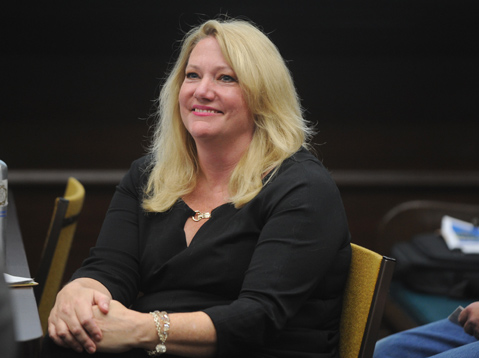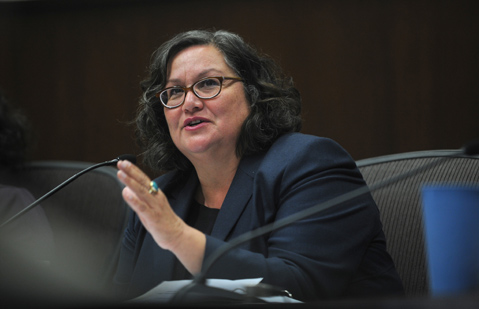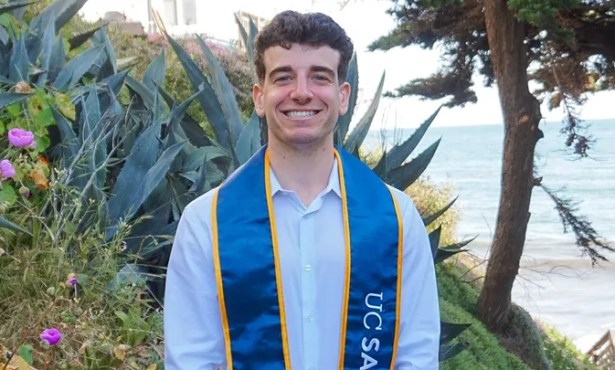Doubling Down on Milpas Street
Will New Business District Keep It Real or Accelerate Gentrification?

When the Milpas Community Association (MCA) formed in 2010, its chief spokesperson wasn’t the least bit shy about getting in people’s faces. Outspoken, pugnacious, and charming, Sharon Byrne was vilified by homeless-rights advocates for her relentless criticism of the Casa Esperanza homeless shelter.
But she was equally distrusted by the City Council’s conservative bloc, which at one time regarded her as a loose cannon and opportunist who ruined their chances at gaining political control. Four years later, the MCA has won community-organizing accolades nationwide, not just for its efforts to clean up Milpas Street, but for fostering a genuine sense of community spirit thanks to the Christmas parades, car shows, food fests, and Halloween events it sponsors.
This Tuesday, Byrne packed the council chambers in hopes of winning city support for plans to transform the MCA from a volunteer-driven organization operating on a shoestring budget of $40,000 a year into a bona fide business improvement district legally empowered to levy fees on neighborhood businesses to the tune of $225,000 a year to fund ongoing marketing, promotions, special events, and government outreach. While no action was taken, most councilmembers expressed enthusiasm for the plan, though some had significant reservations.

Byrne and the MCA were told they needed to do a better job communicating the plan to affected business owners. Councilmember Cathy Murillo said she spent four hours canvassing Milpas Street merchants last Saturday and was struck by how few had even heard of the improvement district. In fact, the draft plan was just released to the council last Friday. Given Santa Barbara’s astronomical rents, Byrne was also warned that apartment owners could not be included among the businesses assessed for fear that the additional cost would be passed on to their tenants.
While not nearly as polarizing as she once was, Byrne still carries a charge for some progressive-styled community activists associated with groups like CAUSE and PODER. They blasted the proposed business improvement district, arguing it would accelerate the rate of gentrification while giving undue voting power to large hotel operations at the expense of the small mom-and-pop merchants.
But more striking was the enthusiastic support Byrne and the MCA got from homeless-rights advocates, not to mention several longtime homeless individuals MCA helped get off the street. In explaining the need for morphing into a business-improvement district, Byrne said, “We can’t be everything to everybody everywhere.” As a volunteer-dependent organization, she went on, the MCA is susceptible to burnout.
The new district would run from the beach to the S.B. Bowl, bounded by Milpas Street on the east and Salsipuedes Street on the west. Any business within those borders would have to pay an annual assessment, which Byrne said was roughly the price of a quarter-page ad in The Santa Barbara Independent. Those fees would generate anywhere from $180,000 to $225,000 a year. Although the plans have yet to be finalized, Byrne suggested $77,000 would go for graffiti removal and street cleanup, while another $77,000 would cover the cost of promotions and special events.
Government representation, she said, would be a key function of the new entity. The MCA spent countless hours haranguing City Hall about people getting drunk at the Cabrillo Ball Field, Byrne noted. When a flashing pedestrian crossing light recently malfunctioned, it turned out the solar cell energizing it was not getting enough exposure because of intruding tree branches. Once again, City Hall had to be lobbied to make sure the work was done expeditiously.
Also driving the effort is the fact that Milpas Street, like the much ballyhooed Funk Zone, is on the verge of becoming discovered. “It’s where the locals go,” said Byrne. Three years ago, she would have said exactly the opposite. Even more, at least according to Kathy Janega-Dykes of Visit Santa Barbara, Milpas is where visitors now go if they’re seeking “an authentic local experience.”
While Murillo used different language, she worried that whatever authenticity is left on Milpas Street could soon go the way of State Street — pretty, she said, but notably devoid of small, locally owned businesses — if the district is unleashed. Murillo expressed concern about the G-word, stating, “I would like to see a plan to avoid gentrification.”
To the extent other councilmembers shared such concerns, they did not say. Mostly, they told Byrne to reach out to the entire community before coming back to the council for the next step. At that point, the MCA will be asking permission to mail out the petition to create the district. If the owners of just more than 50 percent of the assessed property value approve, the district is all but certain. But the worst thing, Mayor Helene Schneider cautioned, would be a close contest regardless of the outcome. Byrne said the MCA would initiate community outreach in earnest after the holiday season and be back before the council in the spring.



